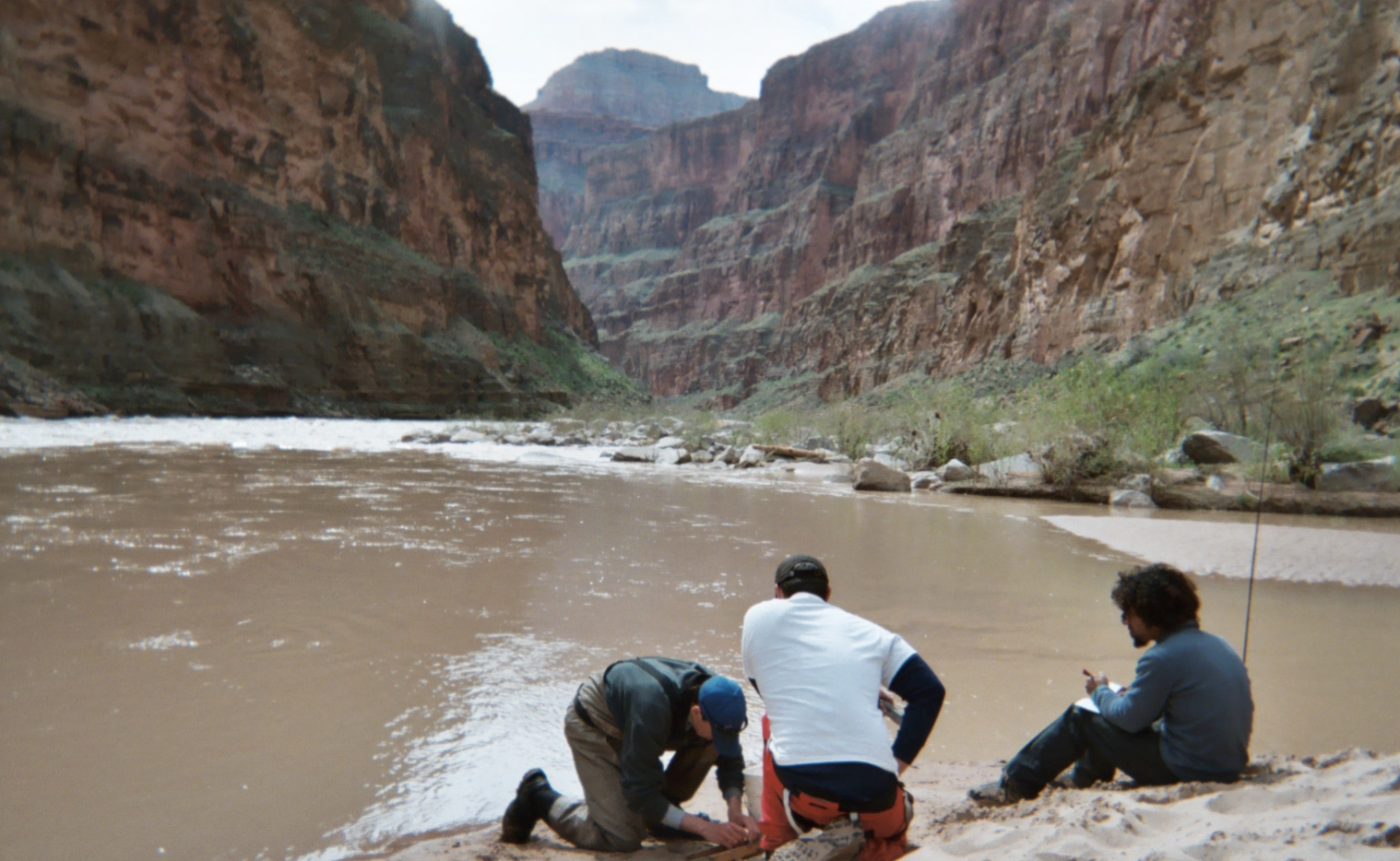Our visit to Kanab Creek was very distinct from our experiences at other tributaries to the Colorado River in Grand Canyon. While all other tributaries visited upstream were short, high-gradient clearwater streams, Kanab Creek is a longer, low gradient stream that drains a much larger area. Due to recent storms, the creek was running high and turbid with warmer temperatures than the mainstem. Observations within the first 100 meters of the creek showed diverse fish habitat including slow riffles, long runs and pools, and a significant amount of backwater and vegetation, with both gravel and muddy banks. The creek appeared to provide habitat suitable for native fish spawning, rearing and foraging (i.e. gravel-laden riffles and backwater) and did not contain large barriers to fish migration, unlike other tributaries we encountered such as Shinumo Creek or Elves Chasm. Also, Kanab provides diverse fish habitat areas and suitable gravel for both broadcast and nest spawners.

Figure 1 – Colorado River at the confluence of Kanab Creek. (Photo: ??????)
During our time at Kanab Creek we observed 9 flannelmouth suckers, which ranged in standard length (SL) from 31-157 mm, 2 bluehead suckers (SL 43 and 57 mm), 1 rainbow trout (SL 114 mm) and 4 speckled dace (SL 31-36). The largest flannelmouth sucker (SL 157) displayed breeding tubercles on the anal fin and was therefore assumed to be making a spawning run up Kanab Creek.
From our limited time spent on the creek we could not deduce whether or not the fish are year-round residents of the creek. We hypothesize that Kanab supports fish year- round because the habitat appeared to be superior to that of the mainstem Colorado River with respect to rearing and temperature. Very few aquatic invertebrates were observed during our visit, but we hypothesize that the creek supports higher densities of invertebrates under clearer flow conditions. However, the one invertebrate that we did find was a Plecoptera (stonefly), family Perlodidae, which is a taxon that is generally fairly intolerant of heavy sediment and pollutants. The presence of Plecoptera in the system indicates that it is generally good habitat that supports diverse and abundant invertebrate taxa. The higher invertebrate availability in tributaries may help to explain the presence of rainbow trout in the muddy stream.
Sampling of the mainstem river concluded little aquatic invertebrate life present and therefore tributaries would likely provide better foraging habitat. Trout are typically clearwater species, however, they are known to be able to tolerate periods of elevated, turbid flows. At the time of our visit to Kanab Creek it was running murkier than the mainstem Colorado River. Whereas most small tributaries provide Clearwater refuge from the maintem when the Little Colorado and Paria Rviers are dumping copious amounts of sediment into the mainstem, Kanab was the opposite. Therefore there must be some other incentive for trout to be in Kanab Creek. It is possible that trout are year- round residents of the creek and that they simply must tolerate the temporary turbid condition of the creek. Another possibility is that fish from the mainstem enter the stream to find thermal refuge from the cold mainstem or in search of food. Further, similar to suckers the trout may use Kanab Creek for spawning. However, the only trout observed was immature and clearly not in a spawning stage.
Kanab Creek appears to be of great importance to the fish of the Colorado River. However, little research has been done on the system as a component of the ecology of the Grand Canyon. It is one of the longest tributaries and provides high quality, diverse fish habitat. Therefore it may be preferential to the fish of the mainstem or simply provide a refuge or spawning habitat. More attention should be given to Kanab to better understand its significance to the fish of the Colorado River.
